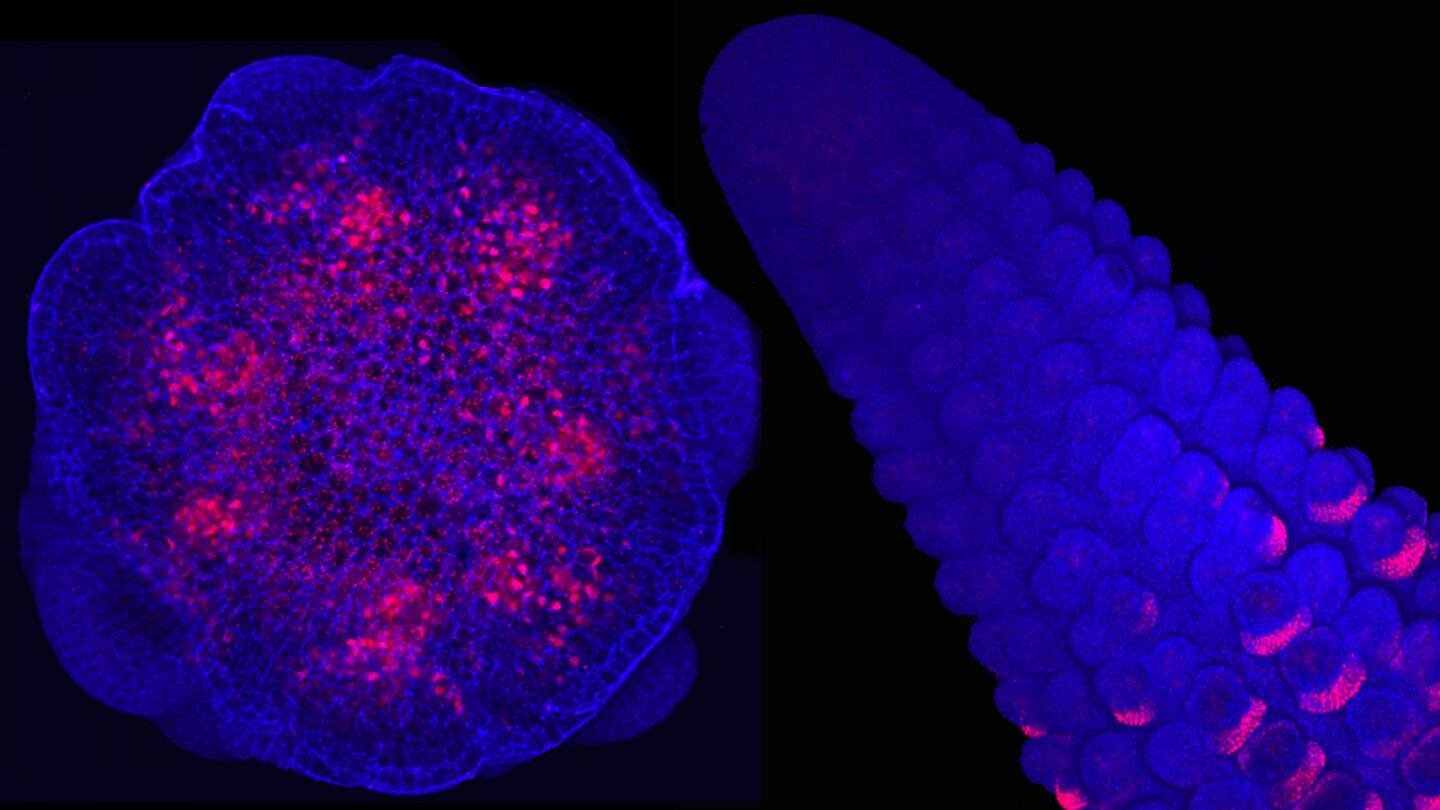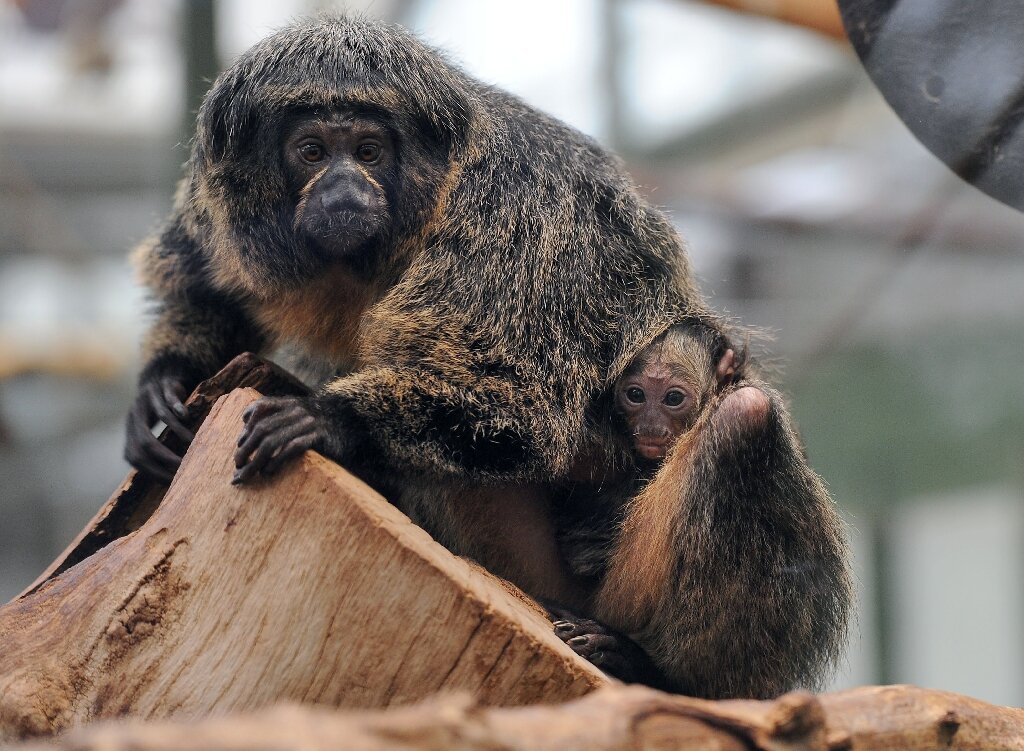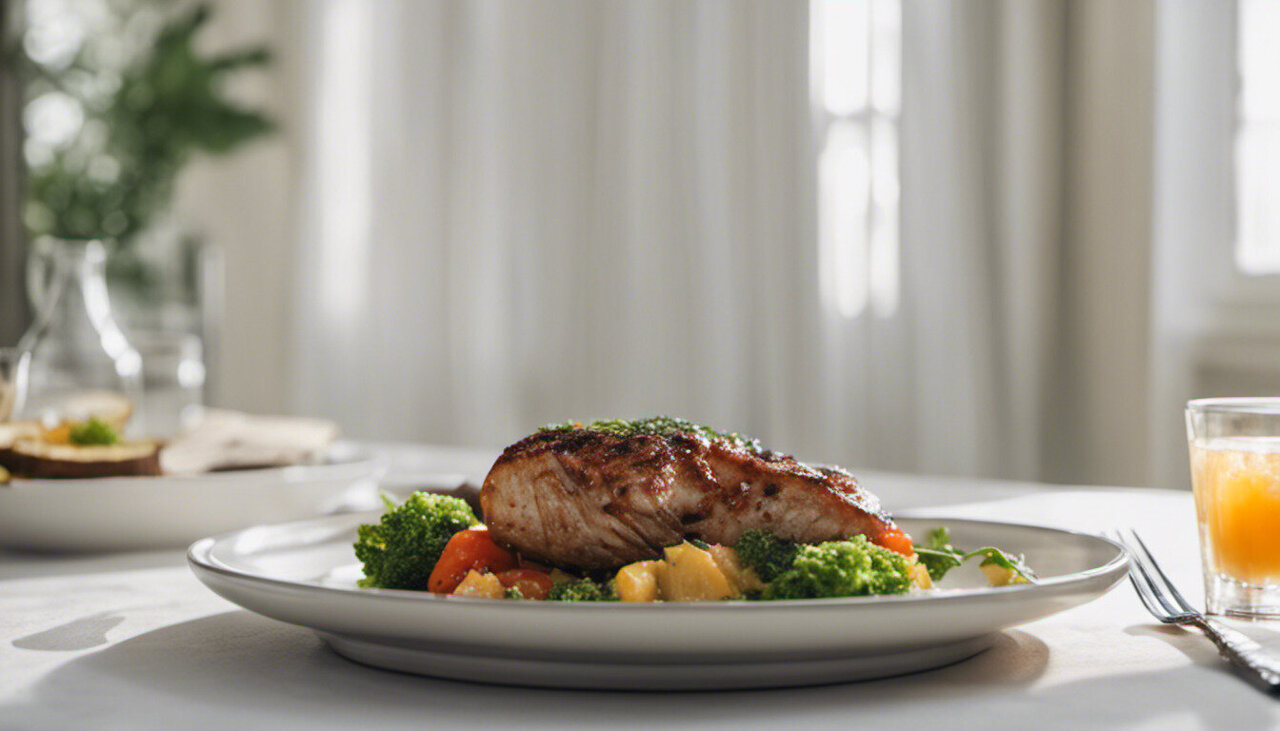#Building a corn cob—cell by cell, gene by gene

“#Building a corn cob—cell by cell, gene by gene”

Corn hasn’t always been the sweet, juicy delight that we know today. And, without adapting to a rapidly changing climate, it is at risk of losing its place as a food staple. Putting together a plant is a genetic puzzle, with hundreds of genes working together as it grows. Cold Spring Harbor Laboratory (CSHL) Professor David Jackson worked with Associate Professor Jesse Gillis to study genes involved in corn development. Their teams analyzed thousands of individual cells that make up the developing corn ear. They created the first anatomical map that shows where and when important genes turn on and off during key steps in development. This map is an important tool for growing better crops.
Humans have been breeding corn to make it more useful for thousands of years. Jackson says:
“Ten thousand years ago, corn did not exist, right? There was a wild plant called teosinte. Teosinte itself only makes about 10 seeds. It makes these really tiny ears that don’t give much nutrition. In fact, the seeds they make are so tough that they would break your teeth if you try to eat them anyway.”
The secret to more and bigger kernels is found by looking at baby ears of corn 1-10 mm long. The scientists used a technique that allowed them to track every cell. They gave each cell a genetic ID tag, called a barcode. Xiaosa Xu, the lead author of the study, compares it to building a building. Xu says:
“We are able to use this single-cell RNA-seq technology to identify which block is what kind of identity: if this block is from our kitchen room or that block is from our bedroom.”
The scientists took corn plants at early stages of development, broke them into individual cells, barcoded them, and then saw what genes were turned on in each one. Jackson notes, “in the past we haven’t been able to separate the cells and figure out the genetic information that’s specific to each cell. So that’s really, what’s new and exciting.” They could then reconstruct an anatomical map to pinpoint where genes important for corn development were used.
Crops are still evolving. Jackson looks forward to developing different kinds of corn plants to fill new ecological niches. He also hopes this new technique will help other plant geneticists in their efforts to sustainably improve crop yields.
Scientists learn how to increase corn crop yields
Xiaosa Xu et al, Single-cell RNA sequencing of developing maize ears facilitates functional analysis and trait candidate gene discovery, Developmental Cell (2021). DOI: 10.1016/j.devcel.2020.12.015
Citation:
Building a corn cob—cell by cell, gene by gene (2021, January 26)
retrieved 27 January 2021
from https://phys.org/news/2021-01-corn-cobcell-cell-gene.html
This document is subject to copyright. Apart from any fair dealing for the purpose of private study or research, no
part may be reproduced without the written permission. The content is provided for information purposes only.
If you liked the article, do not forget to share it with your friends. Follow us on Google News too, click on the star and choose us from your favorites.
For forums sites go to Forum.BuradaBiliyorum.Com
If you want to read more Like this articles, you can visit our Science category.



